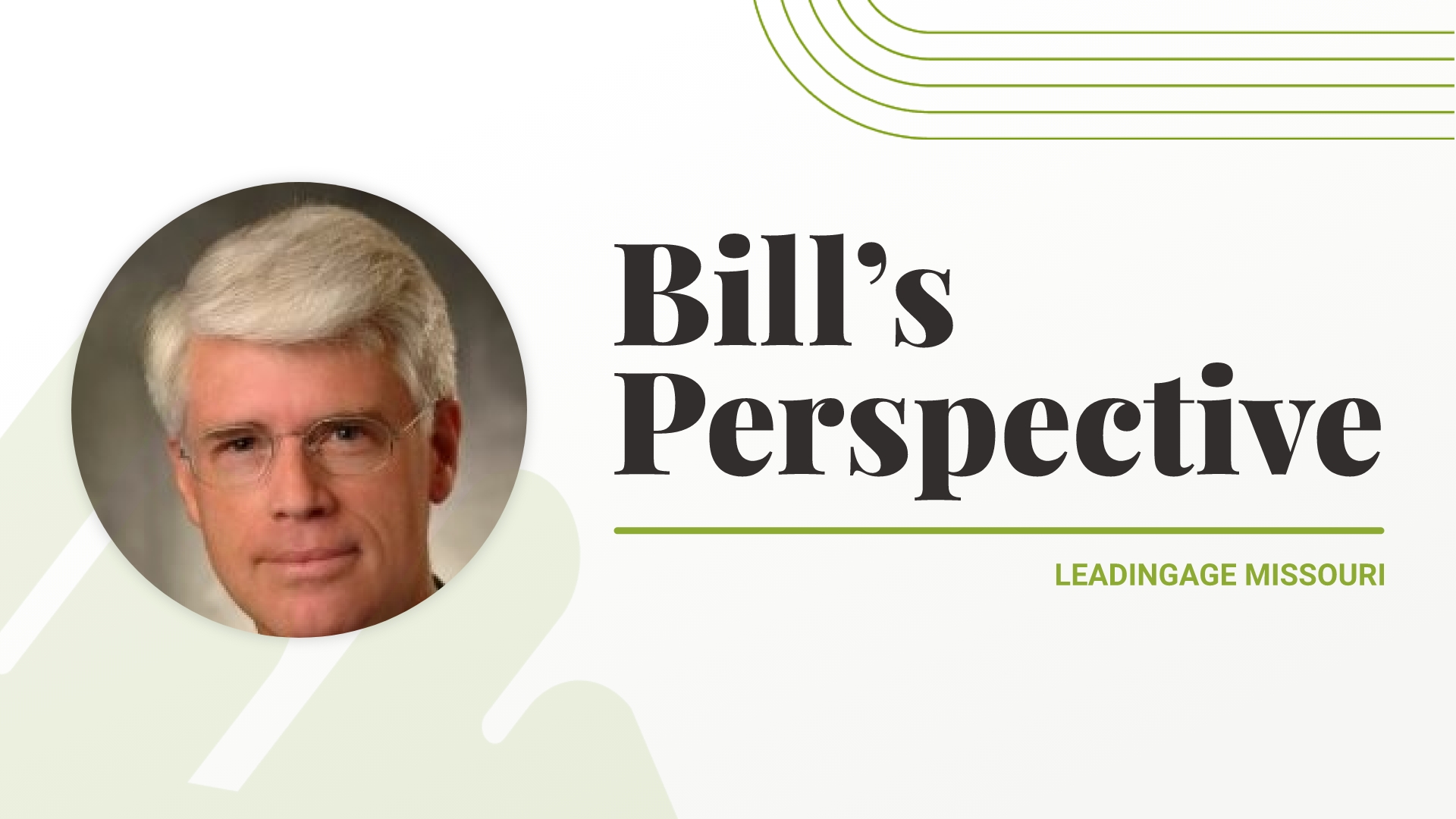Hello LeadingAge Missouri Members!
My brain is at capacity following an energizing and educational LeadingAge Annual Conference, so I’m “brain dumping” on the flight home to relieve cognitive pressure. Thus, my current perspective is literally from 30,000 feet! LeadingAge’s Annual Conference is always strong on education, but this year was extraordinary. Here are three thought-provoking questions addressed.
1. Are you ready to develop an “Active Adult” community?
At a session devoted to this new frontier in aging services, I saw several LA MO members. That makes sense. The presenters emphasized that non-profits have better access to finance options than for-profits in the current high-interest-rate building environment AND many non-profits are familiar with active agers from managing Life Plan Community ILUs. While there is no uniform description of an active adult community, most offer resort-type amenities, social activities, wellness programs, and a range of housing options – from stand-alone residences (cottages with clubhouse, townhomes & multiplexes, or congregate apartments), with or without services, to integrated developments featuring care networks. While the presenters didn’t dispute that older Americans want to remain in their homes as long as possible, they shared data on substantial demand for active adult communities, where all aged seniors “age in place.” But the presenters were quick to acknowledge the formidable challenge of meeting a surging “baby boomer” demand (amid their shifting desires) during a time when finding staff is tough, operating costs are inflated, and construction financing and costs are escalating. Regardless, there is no question informed and tech-savvy seniors, in increasing numbers, are seeking communities that sustain and activate life experiences which boost both life-span and well-span.
2. Can refugees help solve your workforce challenges?
In a Conference session, not unlike one LA MO delivered at its Ozark Annual Conference, I confirmed the answer is unequivocally “yes”! Migration will soon be the primary driver of U.S. population growth. In 2023 alone, 60,000 refugees resettled here. Many more are expected next year, as 2.9 million refugees worldwide seek new homes. Refugees – the most thoroughly vetted immigrant population – need to be part of the solution for our field’s workforce dilemma. Many refugees have caregiving skills and come from cultures that value elders. There are multiple pathways for refugee hiring, but a local Resettlement Agency will be best for most providers. Why? Because the refugee is already in the U.S, fully documented, and available to work immediately for little or no cost of acquisition and with support from the Agency. There can be training and language challenges, but there are Agency support and technology solutions. According to LTC providers hiring refugees, the #1 problem encountered is that refugee workers signed up for too many shifts and bring family members also hoping to work. What a problem to have! At the Missouri session devoted to refugee workforce solutions, we shared that 3,000 refugee families are expected in St. Louis through a local Resettlement Agency. LA MO is building a task force to explore collaborative ways LA MO members can take advantage of the refugee workforce with housing, transportation, and employment solutions for these new legal immigrants. Would you like to be involved? If so, please reach out to me.
3. How will you use Artificial Intelligence to support your work?
Implied in this question is that you will use AI. That was the premise of Advancing Aging Services: Embracing Generative AI & Large Language Models. Presenters argued that AI delivers efficiency and productivity to aging services, and the question for providers is not “if” but “when” they will integrate it – as 3/5 of providers already have. One panelist noted “AI today is the worst we’ll ever use,” highlighting expected improvements and higher use – “within five years, AI will be as ubiquitous in aging services as the internet is today.” So, how is AI used today in aging services? Here are examples shared:
- Process Automation – one provider has automated 170+ daily tasks across risk management documentation, quality reporting, occupancy & financial reporting, dining orders, and data transfers that save staff time and reduce errors
- Fall risk prediction
- Culinary menu preferences
- Resident satisfaction scores
- Clinical decision-making (a bot suggests clinical care pathways)
- Weekend Manager Assistance (procedures manual loaded for queries)
- Training & Development
- Retention improvement
- Meeting notetaking, summaries, task prioritization and action item tracking
- Creating survey deficiency Plans for Correction
- Document creation (draft of policies, communications, presentations)
Even though the benefits of AI can be great, the presenters stressed that guardrails must be in place to prevent misuse. Policy templates were shared. In addition, LeadingAge published Large Language Models in Aging Services – available on the Learning Hub and free to members – to illuminate how LLMs can assist with work-related activities and tasks.
These were but three of 150 Conference sessions designed to help members advance their missions. Others sessions addressed organizational life cycle, marketing, governance, succession/transition planning, and strategy. As LA MO begins to build a new strategic plan (see article below) to serve you better, it won’t surprise you that I devoted my time to Conference sessions that will support our strategic planning process. We are blessed to have a national partner that so excellently supports its members and its State Affiliates with education and fellowship! Thank you LeadingAge!
Yours in Service,
Bill

